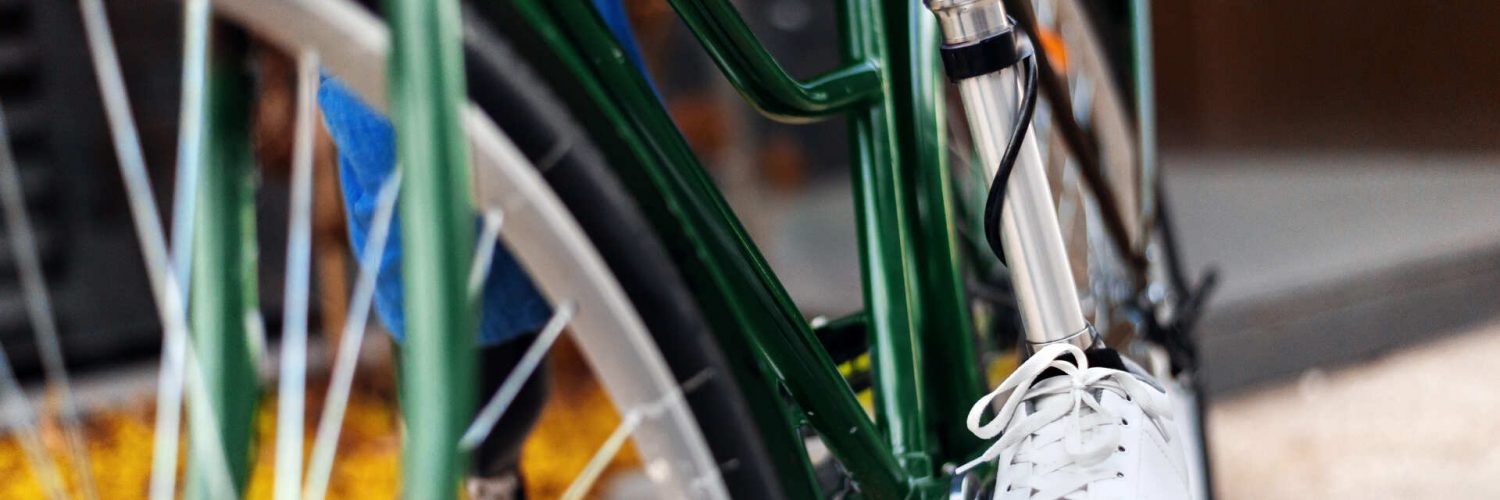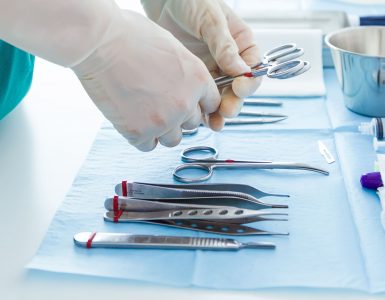While all Torah prohibitions are set aside for Pikuach Nefesh, including Chillul Shabbos, this is not the case for a Choleh sheEin Bo Sakana (a person whose life will not be endangered if he does not receive treatment). To treat a Choleh sheEin Bo Sakana on Shabbos, we may only violate Issurim d’Rabbanan with a Shinui[1], or a non-Jew must be enlisted (Shulchan Aruch, O.C. 328:17).
There is another category of Choleh that falls between the two categories described above: Sakanas Eiver – a patient who is not in mortal danger but is at risk of losing one of his limbs to paralysis, amputation, or necrosis due to illness, injury, or trauma. His status is more precarious than a Choleh sheEin Bo Sakana – who is not at risk of losing any of his limbs – but not as grave as a Choleh sheYesh Bo Sakana whose life is at risk.
There is a Machlokes Rishonim regarding Sakanas Eiver. The Gemara in Avoda Zara (28b) discusses how to treat an “Ayin sheMarda” – a serious disease of the eye.[2] The Gemara concludes that it may be treated on Shabbos because “Shuryana d’Eina b’Liba Talya”. The Rishonim argue about the meaning of this phrase:
- Rashi (and most other Rishonim) explain that the Gemara originally held that an Ayin sheMarda only poses the risk of blindness but it does not endanger the patient’s life. It would therefore be forbidden to violate any Issurim d’Oraisa in order to treat it. However, the Gemara ultimately asserts that an Ayin sheMarda poses a risk to the heart which is a matter of Pikuach Nefesh. If so, one may certainly violate Issurim d’Oraisa to treat it.
In other words, according to Rashi, one may not violate Issurim d’Oraisa (such as Chillul Shabbos) in a case of Sakanas Eiver unless the patient’s life is at risk.
- Tosfos (ibid. and in Beitza 26a, based on the view of Rabbenu Tam, also cited by the Mordechai, Shabbos 464) hold that the Gemara’s conclusion is that one may treat an Ayin sheMarda on Shabbos because one may violate Shabbos for Sakanas Eiver.
Most Poskim rule like Rashi, which would lead to a significant Chumra: In a case of Sakanas Eiver that does not endanger the patient’s life, one may not violate Issurim d’Oraisa to save the limb! For example, if a person’s finger is severed on Shabbos but the bleeding has been controlled and there is no (immediate) Sakana, one may not violate Issurim d’Oraisa so he can travel to the hospital and have his finger reattached. Similarly, if a person suffers testicular torsion, and is at risk of becoming sterile if he does not undergo immediate surgery, he would not be permitted to violate Issurim d’Oraisa as his life is not at risk. Is there any room for leniency?
[It is important to mention the Tzitz Eliezer’s observation (quoted in Shemiras Shabbos Kehilchasa 33, footnote 9) that the loss of a limb often endangers the entire body. One must be cognizant that Sakanas Eiver can in fact be a matter of Safek Pikuach Nefesh for which Issurim may and should be violated. It is only when a physician attests that the entire body is not endangered that we can consider the case as only Sakanas Eiver.]In an as-yet-unpublished Teshuva, HaGaon Rav Asher Weiss Shlit”a discusses this topic. He notes that while Tosfos hold that one may desecrate Shabbos due to Sakanas Eiver, as mentioned above, we cannot rely on this opinion (even in combination with other reasons to be lenient) because the Poskim rule like Rashi. Concerning Issurim d’Oraisa, we cannot rely on a Da’as Yachid (a sole opinion). However, he nevertheless rules that one may be lenient in a case of testicular torsion for a different reason:
One of the primary symptoms of testicular torsion is sharp and sudden pain (in addition to nausea and vomiting). This pain is practically intolerable; Rav Asher opines that one may override even Issurim d’Oraisa to treat it. What is Rav Asher’s basis for this ruling?
In Hilchos Yom Kippur, the Shulchan Aruch rules (O.C. 618):
A patient who needs to eat – if there is an expert physician present, even if he is a non-Jew, who says: “If they do not feed him, his illness may worsen and he will be endangered”, we feed him based on the physician’s word. And it needn’t even be said [that we may feed him if the physician says the patient] may die. Even if the patient says, “I do not need [to eat]”, we listen to the physician. If the patient says, “I need [to eat]”, even if 100 physicians say he does not need [to eat], we listen to the patient.
Rav Asher takes note of an important (yet subtle) difference between the Shulchan Aruch’s wording of the physician’s declaration and the patient’s. The physician makes the specific claims that “the patient may be endangered” or “the patient may die”. The patient simply states, “I need to eat”. This difference is significant; the Shulchan Aruch appears to be taking sides in a famous Machlokes Rishonim between the Ri bar Shmuel and Rabbenu Tam (cited by the Hagahos Mordechai, Shabbos 467):
According to the Ri bar Shmuel, a patient is only fed on Yom Kippur if he says “I need to eat; if not, I will die”. Rabbenu Tam, however, maintains that since a patient is neither a physician nor a Navi, he cannot predict that he will die if he does not eat. All he can say is that he needs to eat urgently because he cannot tolerate the fast. According to Rav Asher the Shulchan Aruch is ruling like Rabbenu Tam.
In light of this, Rav Asher asserts that when a patient has truly intolerable pain, it is as if he is saying “I need to…” [eat on Yom Kippur or be Mechalel Shabbos]. We may therefore desecrate Shabbos to treat his pain.
In the case of testicular torsion, why is it permissible to perform surgery instead of just treating the pain? Rav Asher writes that in any case of Pikuach Nefesh we must perform the standard treatment just as we would on a weekday. We thus treat the cause of the pain rather than just administering powerful analgesic medications (that may [also] cause harm to the body).
Rav Yitzchak Rubin Shlit”a posed the question of surgery for testicular torsion on Shabbos to Rav Yitzchak Zilberstein Shlit”a. Rav Zilberstein ruled that the surgery is permitted, even though it seems to be only Sakanas Eiver, explaining that the terrible pain can cause a patient to faint which is considered a Sakana. He also stated that there is a chance of infection that may lead to Sakana. While physicians do not consider a patient suffering with testicular torsion to be endangered, that only applies to the risk to the testicle, but we cannot say with certainty that infection will not lead to death. (He adds: “We also heard from expert physicians that any dead limb in the body can lead to Sakana due to infection. At the very least, it is a Safek Sakana.”] Rav Zilberstein also cites other interesting sources regarding testicular injury or disease and the Sakana it may pose.
It is well known that a “Rodef” – one pursuing another person with intent to kill him – may be stopped using lethal force. The Torah’s example of this (see Devarim 25:11) is two men fighting and the wife of one man grabs one of the testicles of the other in order to save her husband. The Torah states, “And you shall cut off her hand”, which means that one may injure her in order to prevent her from causing harm. The Sifri adds that this is not only the case when she grabs the man’s testicles; the same is true of any part of the body that may lead to a Sakana. The Rambam codifies this Halacha (Hilchos Rotze’ach, Perek 1:7-8):
How so? If they adjured him and he continues to pursue him, though he did not receive a warning for it, since he continues to pursue he is killed. If they can save [the intended victim] by [injuring] one of the pursuer’s limbs, such as by striking him with an arrow, stone, or sword which will sever his arm, break his leg, or blind him, they should do so. If they are not able to aim, nor save him without killing the pursuer, they should kill him, even though he has not yet murdered [his victim], as the Posuk states: “And you shall off her hand, do not have pity.” [This applies] whether [she takes hold of] his testicles or anything else that causes a Sakana, or whether it is a man who takes hold of a woman. The idea of the Posuk is that anybody who intended to strike his fellow with a blow that will kill him, we save the person being pursued by [injuring] the hand [or other limbs] of the pursuer. If they are unable to do so, they save him by the life of the pursuer, as the Posuk states, “You shall not have pity.”
It is evident from the Rambam that a Sakana of the testicles is considered a Sakana of the entire body. If so it would be permitted to violate Issurim to prevent or treat any sort of danger to them. (It is thus similar to a Sakana to the eye which, as explained above, actually poses a danger to life.) Although one could question this proof, as, after all, the Torah does not specify exactly why or how the woman’s act poses a Sakana to the man. However, it is a beautiful and delightful thesis to consider.
[1] We have previously discussed the Machlokes haPoskim regarding violating Issurim d’Oraisa. See Mishpatim 5782.
[2] Literally, “an eye that rebelled”. Rashi (ibid.) implies that this refers to exophthalmos; other explanations include inflammation with discharge of pus. See Encyclopedia Hilchatit Refuit, vol. 6, p. 131.












Add comment